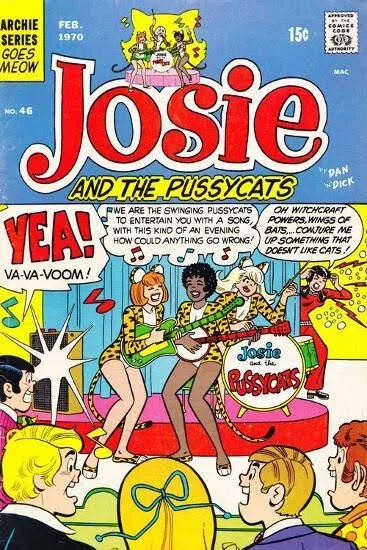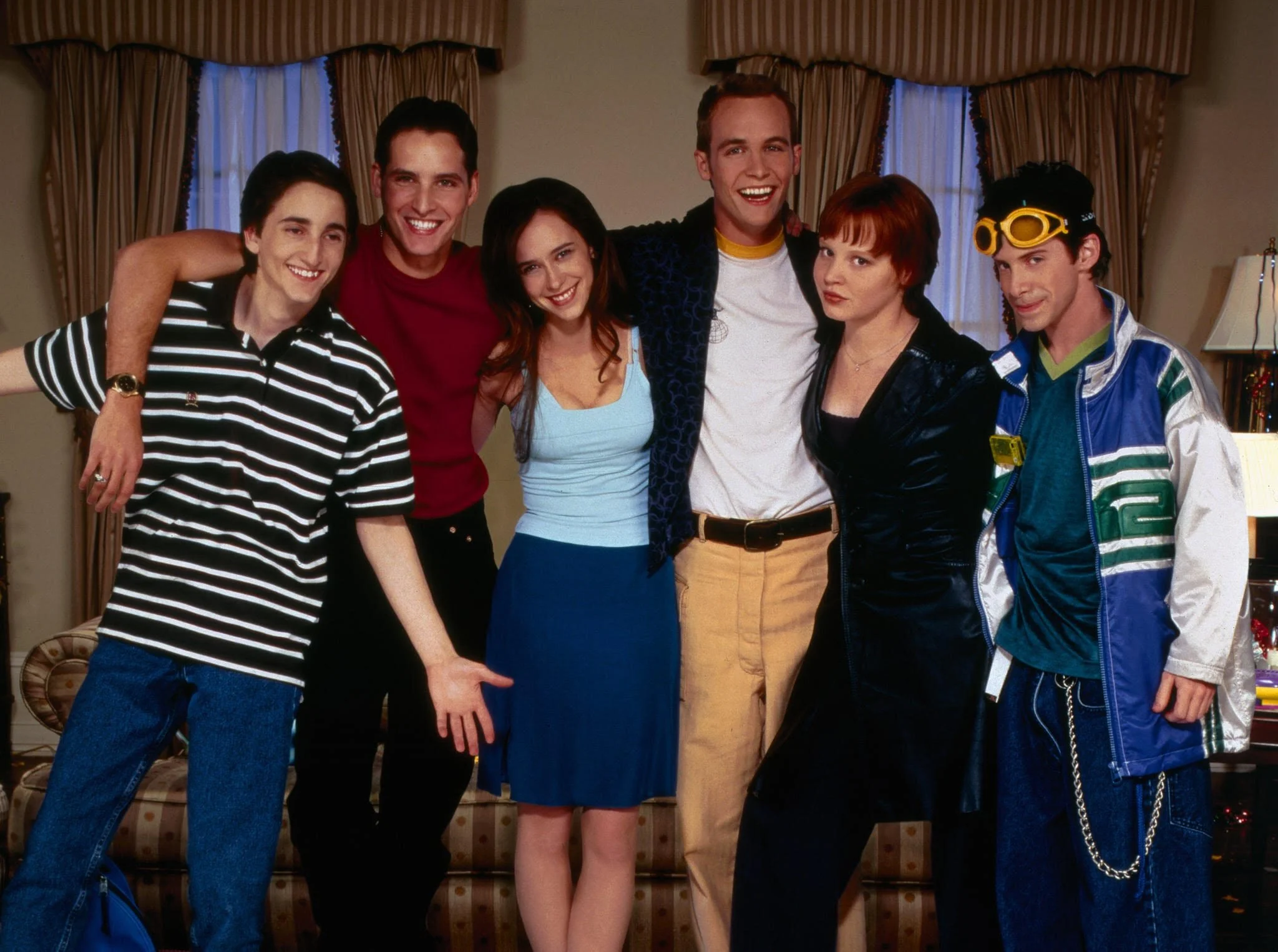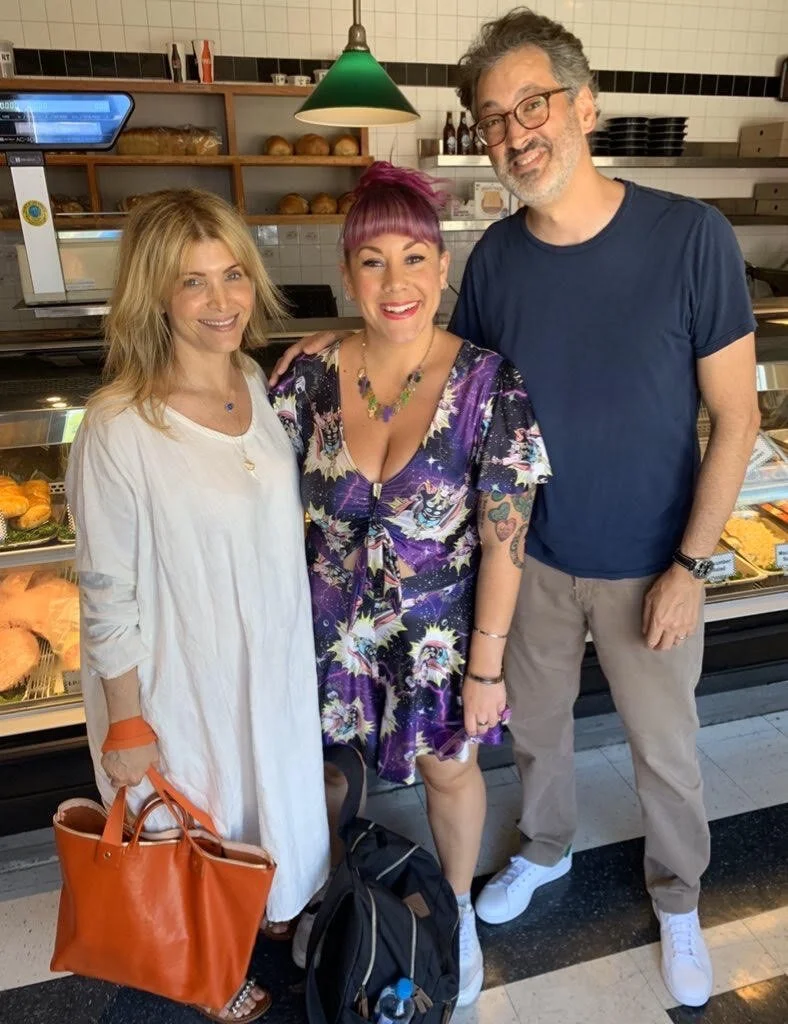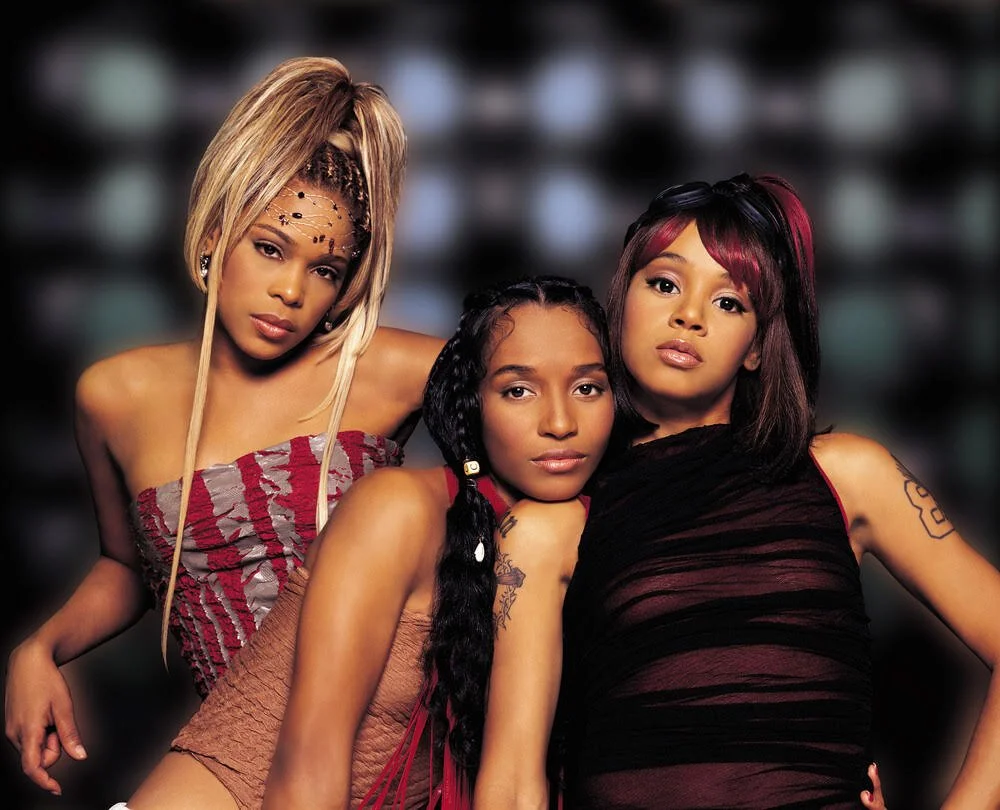Episode 2: Development — From A Space Opera To Beyoncé: The Josie And The Pussycats Movie That Could’ve Been
It doesn’t start smoothly with lawsuits and a potential space opera, but as the Josie And The Pussycats movie begins development it becomes a pop culture time capsule with auditions from Aaliyah, Lisa ‘Left-Eye’ Lopes and Beyoncé writes Maria Lewis.
It’s the late nighties and Josie And The Pussycats as a property has endured largely thanks to the seventies Hanna-Barbera cartoon series playing in reruns and syndication for the past few decades. Archie Comics itself is hanging in there, but it’s the grunge era: it’s adhering to the Comics Code and things are pretty chaste, pretty safe. Yet where the brand is having the most success is with spin-off character Sabrina The Teenage Witch and her hit sitcom, which is pulling in 17 million viewers every Friday night. That character was created by Archie staffer Dan DeCarlo – who we mentioned earlier was a bit of a bad-ass – and he birthed Josie And The Pussycats as well. So the success of one starts to increase the viability of the other. Whispers of a Josie And The Pussycats movie abound and the very, very early stages of development begin to shift into gear. “The main thing for Archie was that it was out of their hands,” says Tim Hanley, comic book historian and author of several books including Betty and Veronica: Riverdale’s Leading Ladies. “They sold the idea to the studio. What they hoped they would get was a Nickelodeon movie, something that would appeal to kids. What they ended up with was what they later termed an MTV movie: something for an older crowd. I think it ended up being PG-13 and this fascinating satire of the music industry at the time, which was great but not at all what Archie was intending to do with the property … it was entirely out of their hands.”
That’s not a dissimilar situation to Marvel during this same period of the nineties. A fellow comic book giant, they were in financial trouble and to stay afloat they’d sold off the movie rights to some of their most famous characters like Spider-Man – that goes to Sony – the X-Men and Fantastic Four – which both end up at Fox – the Hulk smashes into Universal and the Daywalker himself, Blade, slashes over to New Line and becomes the first real theatrical success for a Marvel comic book property after they have flops in the eighties and early nineties with Captain America, Punisher and Howard The Duck. The Marvel Cinematic Universe - aka the MCU, which we recognise today - started with the toys that were left in the box: characters that not only weren’t considered as popular and marketable as those ones mentioned, but they were they only ones that hadn’t been sold off to other studios. They’re iconic now, but Iron Man, Captain America and Thor weren’t considered viable when Kevin Feige was appointed head of Marvel Studios (their own film division). He’d learned a lot from working on Marvel properties with all those other studios and watched carefully about what did and didn’t work.
“On the early films I worked on there was this sense of ‘this is silly, it’s from comic books, how can you make it cool?’,” he says in an interview with Junkee. “Our feeling was always ‘no, it is cool, you just have to take what’s cool about it and put it up on screen’.” The studios were always trying to change those comic book characters and move the X-Men out of their blue and yellow costumes into all-black outfits that had them looking like unsure customers at a kink dungeon. Fiege understood that audiences loved what they saw on the page and the key to big screen success was not fucking around with those core ingredients too much. So the Josie And The Pussycats movie being out of the publisher’s hands in the late nineties when it started development? That wasn’t abnormal. Archie’s situation was the norm rather than the exception when it came to comic book properties being adapted for any screen, whether it was small or silver. There’s another essential detail, which sadly isn’t all that unusual either when it comes to the world of comics books and the artists and writers hired to create them.
“When the Josie And The Pussycats movie was announced Dan DeCarlo - who was the lead artist at Archie Comics at this time, had been for upwards of 40 years at this point - decided that ‘hey, maybe I should get some money for that’ because he created Josie,” says Hanley. “So he filed a lawsuit that resulted in his swift firing from Archie Comics. The lawsuit had merit, he had created Josie. But all of the Archie contracts were very, very strict in terms of ‘this is work for hire, you don’t own that’ and he had signed several of them over the years. He had a much better case in 1969 with the TV show: DeCarlo didn’t know the cartoon TV show existed until right before it happened. And if he had pursued a lawsuit then, he might have had a shot. He got advised that if you go after them, you’re never going to draw a comic book again, no one will hire you, so he decided to stick with the regular job and stay on with the company.” This bit is … sad, full warning here, but it is part of Josie And The Pussycats journey so it’s important to talk about it and important to talk about Dan DeCarlo. So after years of working there and generating an incredible amount of output, Hanley says the news of a “big, supposedly blockbuster movie” was enough to lead him to sue.
DeCarlo lost and Archie launched their own counter lawsuit, securing the contracts on all the other properties the artist and writer had created while working for the comic book publisher. His exit from the company not only hurt DeCarlo, but it hurt Archie who lost one of their most legendary creatives. What makes the Josie And The Pussycats example sadder, is all of this goes down in the last decade of Dan DeCarlo’s life. His two sons that he’d had with his wife, the real-life inspiration for Josie, Josie DeCarlo had passed away from cancer a few years earlier. He had support from legendary comic book figures like Paul Dini who really identified with his struggle and was a close friend. Yet when DeCarlo died in December, 2001, at 85 he wasn’t as acknowledged, celebrated and respected as he should have been. As mentioned, this is not a unique situation to DeCarlo: this type of lawsuit is quite common as artists and creators try to fight for more compensation for their creations as the characters go on to various multimedia projects.
There are dozens of these, dozens upon dozens, and none of them end well. There’s Marv Wolfman, creator of the character Blade, who sued as the first movie was coming out in 1998 over very similar reasons to DeCarlo. He lost. Staying with Marvel, Howard The Duck’s creator Steve Gerber fought for creative control of the character around the same time as that ill-fated movie was in development but that dispute was kept hush hush for years after the fact. There’s Gary Friedrich for Ghost Rider, James Warren and Vampirella, Alan Moore with Watchmen and V For Vendetta, after Sam Raimi’s Spider-Man movies were a colossal hit Stan Lee sued Marvel in 2002 for profits and they settled, while Jack Kirby and Marvel’s issues were headed to the Supreme Court. Perhaps the two most famous battles, however, relate to two of the most famous comic book characters. You may have noticed a change to the credits of DC properties that feature Batman in recent years, if you’ve been paying attention: the character of Batman, as created by Bob Kane and Bill Finger. The addition of Bill’s name is new and comes after years and years of legal battles to get recognition for the man who co-created some of the most integral aspects of the Caped Crusader – and many of the supporting characters and Rogue’s Gallery - and went largely unrecognised for decades.
Then there’s the big guy, Superman, and the fight for not only copyright but royalties and a myriad of other factors for creators Jerry Siegel and Joe Shuster, who fought for decades, passed away, and whose fight is continuing through their surviving family members. We’re glossing over a lot of the specifics here because each of these legal battles individually is dense, altogether hella dense, but in Siegel and Shuster’s case it’s over 70 years worth of collated court cases and appeals: the Wikipedia page alone is longer than a novel. Just like another comic book property, the Hulk, Josie And The Pussycats is in development at Universal Pictures when shit really starts to move. There’s no script, but as an entity it’s floating around and two of the people it floats towards are writer/directors Deborah Kaplan and Harry Elfont.
They work together as a creative unit, they’re a package, and even though they’re in their early twenties in Hollywood they’ve got that BDE – that Big Dick Energy (see the above photo for instance). In terms of favourite cinematic years, 1996 has got to be up there as it has a cluster of excellent movies like Scream, The Craft, movies that don’t star Neve Campbell like The Phantom – which was the first big blockbuster shot in Australia – Twister, The Birdcage, Independence Day, Matilda, Fargo, Frighteners, First Wives Club, Dead Man Walking, Happy Gilmore, 12 Monkeys, Fear, Fly Away Home, The Ghost And The Darkness, Long Kiss Goodnight, Set It Off, like, the list goes on and on. And one of those movies was very clever and kind of underrated now: it was A Very Brady Sequel. The Brady Bunch Movie had come out in 1995 and was a very funny, very meta, very satirical update on the classic TV show and it had become a surprise hit. Its sequel was just as good and in terms of very witty modern updates of staple television shows, The Brady Bunch movies had to walk so the 21 Jump Street movies could run.
Deborah Kaplan and Harry Elfont’s first professional credit is on A Very Brady Sequel in 1996: they come up with the story and they write the screenplay. If you’ve seen that movie, you can get a real taste for how biting their sense of humour is and their unique voice as a duo. But the place where you really hear that voice is on their directorial debut: you may have heard of it, it’s a little film called Can’t Hardly Wait. It drops in 1998 and it stars Jennifer Love-Hewitt right in the middle of her ascent to nineties ‘it girl’. This is a year after I Know What You Did Last Summer, the same year as I Still Know What You Did Last Summer, and bang smack in the middle of her run on a television show that was making stars of everyone who was in it, including Neve Campbell … Party Of Five. The plot of Can’t Hardly Wait - for those who haven’t seen it - centres around the final party for a group of high school seniors who have just graduated. It’s the last shindig before everyone goes their separate ways and it deals with a lot of archetype characters of high school movies: the popular girl, the nerd, the jock, the wigga, the rebel, the goth.
It was written and directed by Deb and Harry, getting greenlit by Colombia in 1997 after a few other teen centric films hit – like Scream. Even more so than A Very Brady Sequel, it highlights all the things they’re good at as filmmakers: pace, characters, comedy, and an ear for incorporating music that not only connects with the movie but connects with viewers. The Can’t Hardly Wait soundtrack was a moderate success on the Billboard album charts and had Missy Elliott, Third Eye Blind, Busta Rhymes, Blink 182 and The Replacements whose song Can’t Hardly Wait is where the film gets its title. It also featured a cover by Smash Mouth, which becomes a radio mainstay and the video clip stars Jennifer Love Hewitt as well: Can’t Get Enough Of You Baby.
Can’t Hardly Wait did okay with critics but more importantly for that stage of their career, Deb and Harry’s movie opened strong at the box-office. By the end of its theatrical run, it had grossed more than double its $10M budget and developed a healthy following that would trot over to the home entertainment market too. What was integral though, was the crew. The movie’s credited with having a lot of ‘before they were famous’ famous people in it and among them would be a lot of Josie And The Pussycats alumni including all four members of parody boyband DuJour. Seth Green, Donald Faison, Breckin Meyer and Alexander Martin all appeared in Can’t Hardly Wait. That movie makes Deb and Harry prime candidates for Josie and they eventually come on board after turning down the project several times. “I think we first heard about from a guy who wasn’t even our agent, who said ‘they’re doing this Josie And The Pussycats movie at Universal’ and we laughed and said ‘oh that sounds really silly, no thanks’,” says Elfont. “And then it came around again a little later … It’s when we realised, wait – they’re telling us we can make a musical? Like, nobody was making musicals at the time so the idea that we could make a studio backed musical suddenly became appealing. Then we started seriously thinking about it.”
Their first idea was to lean into the second version of the cartoon – Josie And The Pussycats In Outer Space – before they settled on a different concept, one that was satirical, meta, and commented on the current state of the music industry. “Then we came up with the whole, you know, brainwashing people through pop music,” says Elfont. “We just kind of looked around at what was going on in music and it felt like everything was … being Gen X’ers and coming of age in the nineties mentality, just looking at what happened to music when we were in our twenties to what happened to music as we were kind of heading into our thirties.” Kaplan agrees, with the pair showing a very early version of their script to producers who didn’t quite get it. “To us, it seemed very clear,” she says. “Again, I guess having come out of college during grunge and suddenly seeing everything get sanitised and people in matching outfits, it felt weird. It felt like something nefarious was going on, even if it wasn’t. You know, it felt like we were being fed something we didn’t want and people were dining out on it.”
Deb and Harry were aware of Archie Comcis as a property, but they weren’t exactly what you would call diehards. Kaplan was “a big Archie collector” and still has her comics from when she was little, whereas Elfont was familiar with the Hanna-Barbera cartoon when it ran in syndication on Saturday mornings. After four months, they were happy with their working draft of the script and it was time to find their Pussycats, the first being a woman who had auditioned for Jennifer Love-Hewitt’s role in Can’t Hardly Wait when she was just a teenager: Rachael Leigh Cook. “I wish it was a more colourful story,” says the actress and producer. “I just remember getting sent the script and really liking it … It’s a fantastic movie, if I do say so myself. I feel I shouldn’t, that I’m not allowed to say things like that about things I’ve been in, but it’s an awesome movie.”
In the years that had had passed since she auditioned for Can’t Hardly Wait, Cook had grown up and her capital had grown with her. Making her debut in The Baby Sitter’s Club in 1995, by the time Josie And The Pussycats was moving in earnest in 2000 she had a shit tonne of experience and some serious hits. There was period flick The Hairy Bird with Kirsten Dunst in 1998, a run on Dawson’s Creek, movies Get Carter and Antitrust, and of course, the big kahuna: Lainey Boggs in She’s All That with Freddie Prinze Jr. That movie was a moment ¬– still is – and it made stars out of the both of them. So when Deb and Harry had that Josie And The Pussycats script ready to go, they knew who they wanted for it and they put out an offer to Cook. Universal had just had a big hit with American Pie and they were keen for Tara Reid as Melody, who Kaplan thought was “perfect”. Those two are pretty much locks, but that role of Valerie becomes this fascinating Sliding Doors moment in a dozen different ways. There’s casting what ifs, and then there’s the great Aaliyah who auditioned for the part and obviously was a generational talent in terms of music with hits like Try Again and Rock The Boat. She was also crossing over into film and auditioned off the back of Romeo Must Die, which she starred in alongside Jet Li and became a cult classic in its own right. She only appeared in two films – the other being Queen Of The Damned - before she was killed in plane crash along with seven others in 2001.
Someone else who auditioned for Valerie was one of the greatest female emcees of all time, Lisa ‘Left-Eye’ Lopes who was also hugely famous for her role in a globally successful all-girl trio, T.L.C. Lopes actually got pretty close too and was called back for the next round of auditions, reading across from Cook. “She was super into it and really kinda fired up,” says Elfont. “The thing about Left-Eye, it was ultimately the comedy chops - we weren’t quite sure. We were like ‘we’re making a comedy, she’s super interesting and musically it would be really interesting, but can she be funny?’ That’s where we kinda got cold feet with her.” Josie And The Pussycats would have been Lopes’ feature film debut. Tragically she too was killed only a few years later at the age of 30 following a car accident. Those two names alone are legendary, but there was somebody else too … Beyoncé. “She was very quiet and sweet,” says Kaplan. “I think she was not Sasha Fierce yet.” Elfont rediscovered the session sheet on his phone not that long ago, tweeting out a throwback from the audition where she sat on the floor throughout the duration. “She kind of just cuddled up on the floor and did the scene and was super, super quiet,” he says. “And we thought ‘alright, I guess she’s not that comfortable’. We weren’t gonna push her, we weren’t gonna grind her and be like ‘MORE! Give us more Beyoncé Knowles!” Aaliyah, Lisa Left-Eye Lopes, Beyoncé and one of Cook’s favourite people to read with from the auditions - now Academy Award-winner Regina King – all auditioned for the part of Valerie. That’s a helluva line up but the Valerie we would all know and love ended up becoming someone else, someone who was on her very own rise: Rosario Dawson.
This article is a written version of the Josie and the Podcats episode Development. Josie and the Podcats is a limited podcast series hosted by best-selling author, screenwriter and journalist Maria Lewis, and produced by Blake Howard of One Heat Minute. New episodes release every Sunday, with bonus episodes during the week.





